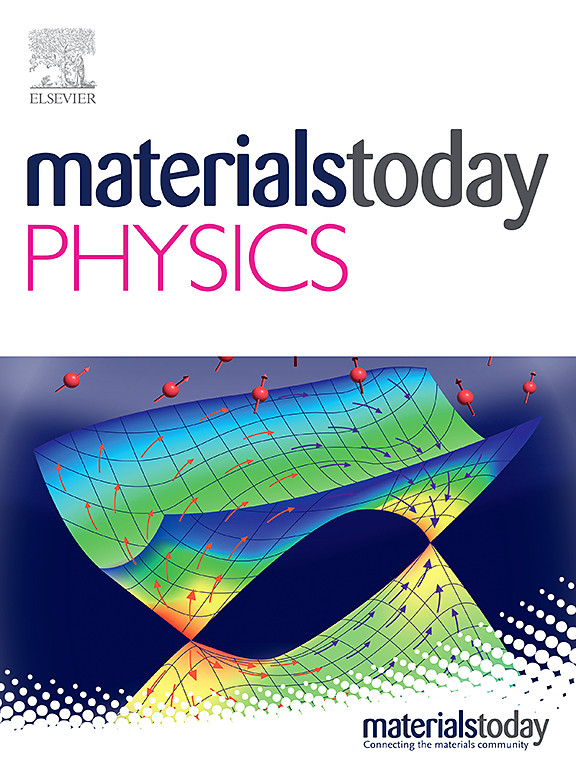零电阻转变温度接近 100 K 的[式略][式略][式略][式略]超导薄膜
IF 10
2区 材料科学
Q1 MATERIALS SCIENCE, MULTIDISCIPLINARY
引用次数: 0
摘要
高超导转变温度有利于超导体的应用。一些铜氧化物超导体的转变温度高于 100 K,如基于 Hg 或 Tl 的 1223 和 1234 相,但其中许多含有有毒元素,如 Hg 和 Tl。同时,上述 Hg-、Tl 基体系或 Tc = 110 K 的无毒 Bi2Sr2Ca2Cu3O10 的上临界磁场或有效质量的各向异性很高,这使得涡旋容易移动,在液氮温度区域的不可逆磁场很低。我们在此报告成功合成了 c 轴取向的 (Cu,C)Ba2Ca2Cu3O9±δ超导薄膜,其零电阻转变温度达到 99.7 K。在不同磁场下测量了随温度变化的电阻率,并得到了不可逆线。电阻率也是在磁场沿交流平面旋转的情况下测量的,使用各向异性的金兹堡-朗道模型可以很好地对数据进行缩放,得出随温度变化的各向异性,从 110 K 时的 17 到 77 K 时的 4。此外,根据磁化-磁滞环计算出的临界电流密度在 77 K 时达到约 6×105A/cm2 (零磁场)。因此,该薄膜可能是在液氮温度区域应用超导电缆或高频超导过滤器的良好候选材料。本文章由计算机程序翻译,如有差异,请以英文原文为准。
Superconducting thin films of (Cu,C)Ba2Ca2Cu3O9±δ with zero-resistance transition temperature close to 100 K
High superconducting transition temperature is favorable for the applications of superconductors. Some cuprate superconductors have the transition temperatures above 100 K, such as the Hg- or Tl-based 1223 and 1234 phases, but many of them contain the toxic elements, like Hg and Tl. Meanwhile, the anisotropy of upper critical field or the effective mass of above mentioned Hg-, Tl-based systems, or the non-toxic with = 110 K is high, which makes the vortices easy to move and the irreversibility magnetic field is very low in the liquid nitrogen temperature region. Here we report the successful synthesis of the -axis oriented superconducting thin film with the zero-resistance transition temperature reaching 99.7 K. The superconducting transitions are rather sharp as revealed by both resistivity and magnetization measurements. Temperature dependent resistivity has been measured under different magnetic fields, and the irreversibility lines have been achieved. The resistivity was also measured with the magnetic field rotated in the ac-plane, and the data can be nicely scaled by using the anisotropic Ginzburg-Landau model, yielding a temperature dependent anisotropy which varies from 17 at 110 K to 4 at 77 K. Additionally, the critical current density calculated from the magnetization-hysteresis-loops reaches about (zero field) at 77 K. Thus the film may be a good candidate for the applications of superconducting cables or high frequency superconducting filters in liquid nitrogen temperature region.
求助全文
通过发布文献求助,成功后即可免费获取论文全文。
去求助
来源期刊

Materials Today Physics
Materials Science-General Materials Science
CiteScore
14.00
自引率
7.80%
发文量
284
审稿时长
15 days
期刊介绍:
Materials Today Physics is a multi-disciplinary journal focused on the physics of materials, encompassing both the physical properties and materials synthesis. Operating at the interface of physics and materials science, this journal covers one of the largest and most dynamic fields within physical science. The forefront research in materials physics is driving advancements in new materials, uncovering new physics, and fostering novel applications at an unprecedented pace.
 求助内容:
求助内容: 应助结果提醒方式:
应助结果提醒方式:


